Contents
Guide
Page List
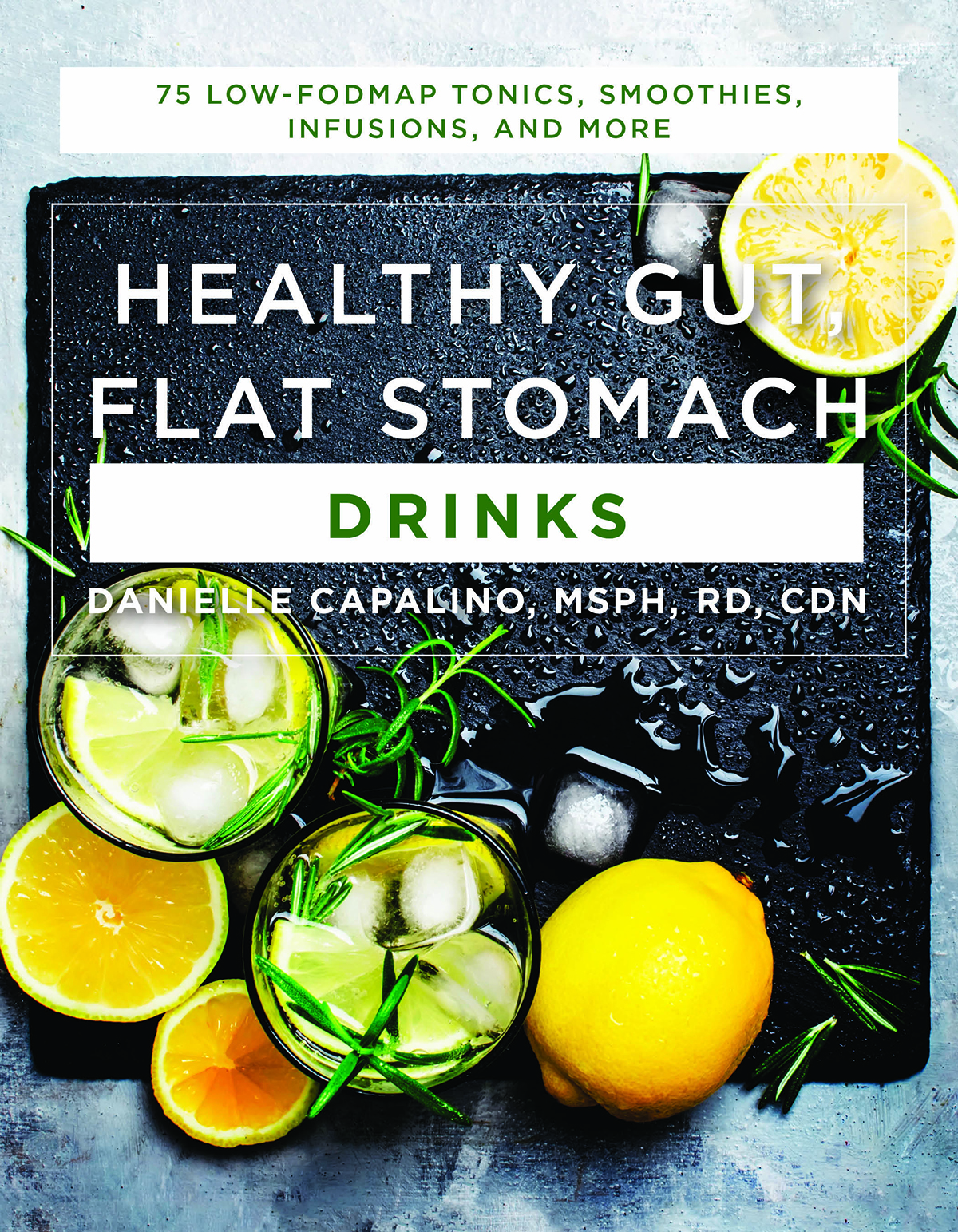
Also by Danielle Capalino
Healthy Gut, Flat Stomach:
The Fast and Easy Low-FODMAP Diet Plan
NOTE The information in this book is not intended to provide medical advice or to diagnose or treat medical diseases. It is strictly for informational purposes. Before undertaking any course of treatment, you should seek the advice of a doctor or health-care provider. I strongly encourage working with a dietitian who is trained in the low-FODMAP diet. If you are experiencing consistent or severe GI symptoms, you should first seek out medical attention to rule out other diagnoses. If you are experiencing bleeding, symptoms that wake you up from sleep at night, symptoms that have changed dramatically or started suddenly, have had unintentional weight loss of more than 10 pounds, fever, or have a strong family history of colon cancer, seek the counsel of a medical professional before you embark on this diet plan.
All the information provided in this book regarding FODMAP content of foods is based on research that has been conducted at Monash University. All the information is accurate at the time of writing, but is subject to change as this is an emerging field. The recipes I have included use low-FODMAP ingredients, but have not been tested in a laboratory setting. This book is dedicated to my baby boy
and the loving people who helped me to take
care of him during his first few months,
allowing me to write this book. Rex, I cant
wait for you to become my official taste tester.
CONTENTS

If you suffer from digestive issues you
need to know about the low-FODMAP diet. Its the diet with a funny name that alleviates digestive distress from irritable bowel syndrome (IBS) and other gut issues.
Foods that are high in FODMAPs can wreak havoc in your gut if you are sensitive to them. The low-FODMAP diet has helped thousands of people, and it will (likely!) work for you, too. Just as I did in my first book, Healthy Gut, Flat Stomach, I will explain what FODMAPs are and how they affect your digestion. If you are new to the low-FODMAP diet, please refer to that book for a complete guide to the FODMAP elimination diet. FODMAP Elimination Diet In my book Healthy Gut, Flat Stomach, I guide the reader through a three-step low-FODMAP plan to identify your FODMAP trigger foods that are causing you digestive distress. The Elimination Phase: You remove all high-FODMAP foods for the elimination diet.
There are still many foods you can enjoy and I provide plans for you to follow to make this manageable. The Testing Phase: You systematically test foods to identify which group(s) of FODMAPs were your triggers. The Personalization Phase: You outline your personalized low-FODMAP plan, taking into consideration your test phase results. Low-FODMAP is an amazing tool. It works for up to 75 percent of people in clinical trials! The belly-soothing beverages in this book are great for anyone, whether or not you are sensitive to high-FODMAP foods. These recipes will not only make you feel good but they will actively be good for your gut.
From smoothies to broths, juices to lattesI have got you covered. Sometimes it feels like the most soothing thing to eat is really something to drink. In this book you will find a comprehensive introduction to the low-FODMAP diet, a discussion about probiotics and other digestion-friendly ingredients, answers to other dietary questions about gut health, and 75 gut-healthy drinks to enjoy. All of the recipes in this book are low-FODMAP and will fit into the elimination phase of the diet. If you know that you can tolerate certain ingredients, you can of course incorporate them into your drinks (for example, if you tolerate lactose, you can use regular milk in place of the lactose-free milk suggested in these recipes). If you frequently feel bloated, you are not alone.
Digestive issues are incredibly commonup to one in five people suffer from these problems. If you think it has something to do with what youre eating, youre probably right. There actually is a scientifically proven, research-based diet that will reduce the bloat and alleviate uncomfortable abdominal symptoms. The low-FODMAP diet has become extremely popular in the past several years as doctors and dietitians around the world have been seeing their patients symptoms disappear. Unlike fad diets, the low-FODMAP diet has research to back it up. Up to 75 percent of people with IBS may find relief by removing high-FODMAP foods from their dietthat is a lot of people who can find relief.
If you have already read my first book, you can breeze through the next section because you might remember this part. If you are new to the concept of FODMAPs, read through this section to get an understanding of the principles behind the diet and why it works so you can feel confident following a low-FODMAP plan. 
FODMAPs are difficult-to-digest, short-chain carbohydrates that can cause digestive distress. FODMAP stands for:
fermentable
oligosaccharides,
disaccharides,
monosaccharides,
and
polyols. These are foods that are high in the carbohydrates lactose, fructose, galacto-oligosaccharides (GOS), fructans, sorbitol, and mannitol. If you suspect sensitivity to FODMAPs, you may have a sensitivity to one, some, or all of these categories.
Although you may know that you are only sensitive to one or two types of FODMAP, the recipes in this book will not contain any high-FODMAP ingredients. You are probably still a bit confused, so let me spell it out for you.
F ODMAP
The
F is for
fermentable, foods that can make you bloated. This is an umbrella term that encompasses the other FODMAPs. Fermentable foods are carbohydrates that are easily broken down by bacteria in your gut. When the bacteria chow down on them, they produce hydrogen, carbon dioxide, and methane gases that can leave you feeling bloated.
Fermentable vs. Fermented Fermentable foods are not the same as fermented foods. Fermentable foods are easily broken down by bacteria in your gut. Fermented foods, such as yogurt and kombucha, have already been broken down by bacteria. The latter are rich sources of probiotics.
F O DMAP
The
O is for
oligosaccharides, a fancy word for a short chain of carbohydrates.
This is a diverse group of foods that have one big thing in commonthey are difficult to digest, so they can cause digestive distress. There are two categories of foods that fall under oligosaccharides: fructans and galacto-oligosaccharides (GOS). Fructans are a carbohydrate that is found in a variety of foods including wheat, onions, and garlic, among others. Galacto-oligosaccharides are a carbohydrate found primarily in beans. Even though this book is all beverage recipes (and you dont usually find things like beans in a drink), I am still going to include examples of high and low FODMAP foods that are not commonly found in drinks for your reference.



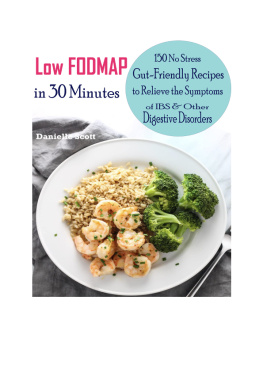
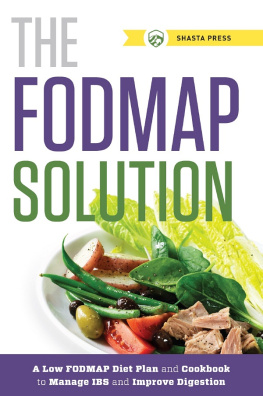

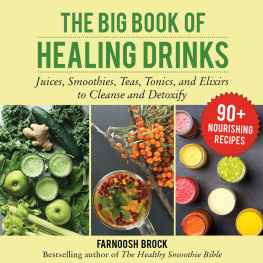
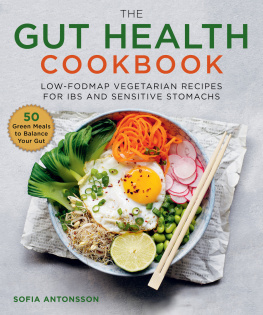
 Also by Danielle Capalino Healthy Gut, Flat Stomach:
Also by Danielle Capalino Healthy Gut, Flat Stomach: NOTE The information in this book is not intended to provide medical advice or to diagnose or treat medical diseases. It is strictly for informational purposes. Before undertaking any course of treatment, you should seek the advice of a doctor or health-care provider. I strongly encourage working with a dietitian who is trained in the low-FODMAP diet. If you are experiencing consistent or severe GI symptoms, you should first seek out medical attention to rule out other diagnoses. If you are experiencing bleeding, symptoms that wake you up from sleep at night, symptoms that have changed dramatically or started suddenly, have had unintentional weight loss of more than 10 pounds, fever, or have a strong family history of colon cancer, seek the counsel of a medical professional before you embark on this diet plan.
NOTE The information in this book is not intended to provide medical advice or to diagnose or treat medical diseases. It is strictly for informational purposes. Before undertaking any course of treatment, you should seek the advice of a doctor or health-care provider. I strongly encourage working with a dietitian who is trained in the low-FODMAP diet. If you are experiencing consistent or severe GI symptoms, you should first seek out medical attention to rule out other diagnoses. If you are experiencing bleeding, symptoms that wake you up from sleep at night, symptoms that have changed dramatically or started suddenly, have had unintentional weight loss of more than 10 pounds, fever, or have a strong family history of colon cancer, seek the counsel of a medical professional before you embark on this diet plan.  If you suffer from digestive issues you need to know about the low-FODMAP diet. Its the diet with a funny name that alleviates digestive distress from irritable bowel syndrome (IBS) and other gut issues.
If you suffer from digestive issues you need to know about the low-FODMAP diet. Its the diet with a funny name that alleviates digestive distress from irritable bowel syndrome (IBS) and other gut issues. 